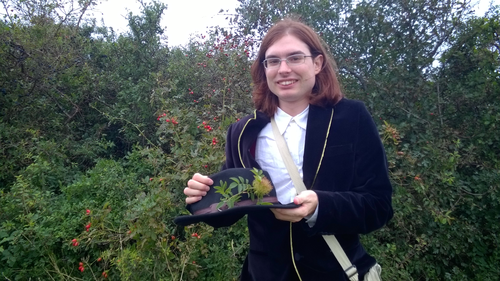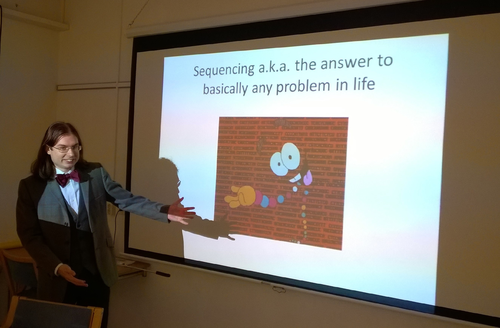This post was written by Erik Gobbo.
 Among gall-making insects, the Cynipidae (gall-wasps) are probably the most fascinating, for many reasons: they are capable of inducing extremely complex galls that often constitute a small ecosystem of their own, they are extremely diverse (counting more than 1300 known species) and most importantly, the nature of their gall-induction process still eludes our understanding. Although it is still unclear how such biological complexity evolved, the most recent molecular phylogenies suggest that the family has been subjected to several independent transitions affecting their life-cycle.
Among gall-making insects, the Cynipidae (gall-wasps) are probably the most fascinating, for many reasons: they are capable of inducing extremely complex galls that often constitute a small ecosystem of their own, they are extremely diverse (counting more than 1300 known species) and most importantly, the nature of their gall-induction process still eludes our understanding. Although it is still unclear how such biological complexity evolved, the most recent molecular phylogenies suggest that the family has been subjected to several independent transitions affecting their life-cycle.
The main focus of my research is to identify the genetic elements responsible for such evolutionary events in the hope that they will shed some light on the molecular mechanism of gall-making. In order to achieve this goal, I focus on the analysis of the genome of closely related species showing major differences on their gall phenotype. My main model is the Japanese species Synergus itoensis.
All members of the extremely species-rich genus Synergus were believed to be inquiline wasps, which means they make their gall from the gall of another wasp (the primary gall-inducer), and are seemingly unable to initiate one on their own. However, S. itoensis has been demonstrated to be a true gall inducer, meaning it probably became capable of initiating the gall formation relatively recently in evolutionary terms. I therefore traveled to Japan and collected some specimens of this insect and of its closely related species S. gifuensis, an inquiline. I then sequenced their genomes and compared the orthologous genes of the gall-inducer to those of S. gifuensis and the other two species for which a genome was available, S. japponicus and S. umbraculus. The underlying assumption is that those genes that are responsible for gall initiation would show evidence of recent positive selection on S. itoensis but not on the inquilines.

Surprisingly, despite the fact that a transition from an inquiline to a gall-inducing biology is often regarded as a major evolutionary event, I found so far no significant difference between the coding sequences of the two categories: standard analysis have not revealed any special selective pressure on the branch were the different life cycle emerged. It would appear that the transition relies on very few genetic changes and can therefore occur easily and smoothly.
However, a pattern emerged once I repeated the analysis with a more elaborate tool that was being developed by a collaborator (as a matter of fact, my dataset was used to test the new program). I can now see that the number of genes that are showing traces of positive selection on the gall inducer is slightly but significantly bigger compared to the other species (on a side note, because of a bug in the first version of the program, I originally concluded that there was no difference). Although more elaborate analysis are needed to confirm the validity of the method, these findings might provide some insight on the genetic of gall induction.

